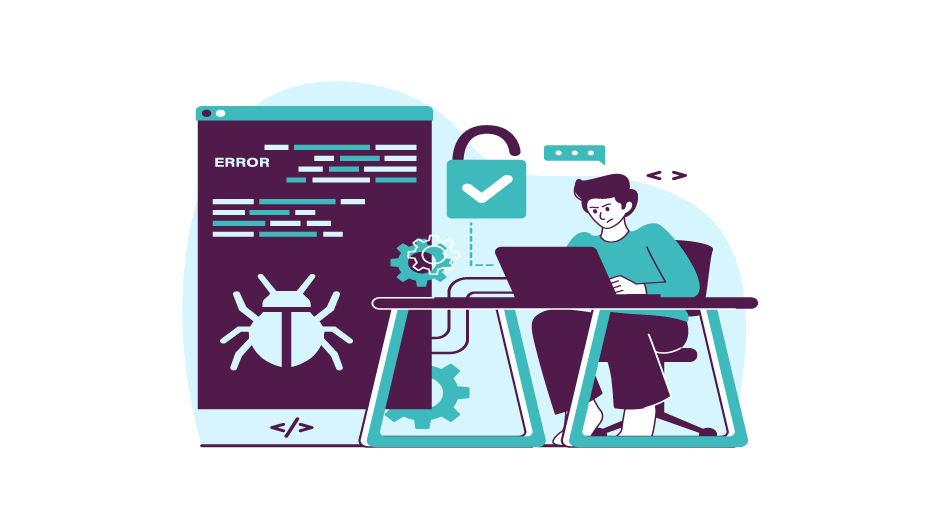It’s more important than ever to make sure that applications are reliable and of high quality in the fast-paced world of software development. Software mistakes can cost a lot of money, make users lose trust, and even cause the whole system to fail. To make software that works well and is reliable, developers need to be proactive about preventing errors throughout the whole development process. This means using best practices that not only make bugs less likely but also make the codebase easier to manage and more flexible.

Teams can save time, resources, and effort while still getting great results if they focus on quality from the start. Fixing bugs after they happen isn’t enough to stop mistakes in software development. You also need to make sure that problems don’t happen in the first place. Every step, from making sure there are clear requirements to using current tools and strict testing methods, is important for lowering risks. This piece talks about the most important best practices for avoiding mistakes in software development. It gives developers useful information and strategies they can use to make software that works well and is reliable.
Best practices for preventing errors on software development:
- Look over your code carefully
It’s helpful to keep going back and looking over your code as you’re making software. No longer does this process need to be done by hand. However, robotic process automation (RPA) can be useful in finding possible code mistakes thanks to huge strides in technology. The best RPA service company will make sure that your code review goes smoothly and find any mistakes you’ve made. Also, RPA services are good for you in the long run because they help you make more money, take advantage of chances that come with going digital, and make more money.
- Test coverage and automatic testing should be used
Automation testing is the process of setting up tools to run a set of tests regularly. This helps find problems early on in the development process, so bugs can be found and fixed before the software is released. Test coverage tells you how many times the code has been checked. By making sure that a lot of tests are run, developers can be sure that their code works and lower the chance that problems will happen again.
- Use tools for version control
As you work on making software, it’s important to keep track of how things are changing and make sure that the script is updated as needed. Version control tools can help you with this. By letting you compare different versions of the code you’re writing and point out any changes that could lead to an error, that helps you avoid making mistakes. Also, many coders can use the same version control tools, which makes it easier to find bugs in software when everyone works together. A good version control tool should be organized so that everyone can work together on it.
It would be better if it could branch and merge, so you could work on different fixes without messing up the work of other writers. Outside influence is not needed when creating complicated software distribution models like Software-as-a-service (SaaS). Any movement by a coder who isn’t paying attention can lead to bugs that could be annoying. More importantly, the version control tool you use should have strong access control to make sure that only approved users can see your codebase and vision tracking to find changes that lead to errors.
- Use tools for analyzing static code
Tools for static code analysis help find mistakes and make code more consistent. They also let you know about performance problems that could be in your code, which forces you to improve efficiency. Unused variables and “dead codes,” which are declared but not used, or codes that don’t have any sense, can also cause errors. It’s harder to skim code when there are codes like these. All of these places where mistakes can happen can be found early on in the software development process with the help of static code analysis tools.
- Use standards for coding
For more good reasons, coding guidelines are the best way to write code. They make it easy for developers to write high-quality code that is also easy to manage and read. Once they’re done making your software, they can fix any mistakes that were made that could have been avoided. Maintaining accuracy can make code easier to read, which can help you code more efficiently. They also give you a way to make sure your code is error-free and of high quality, which makes it easier to fix bugs and add new features over time.
- Talk about the coding requirements
Every code has specific needs, and if you’re working with a group, it’s best if the needs are clear and the directions can be followed. It’s important that the code can be read, understood, and changed. It should also follow known coding standards, including consistent ways of naming things and formatting them. The code should also be very scalable so that it can adapt to changes and growth in the future, and it should have built-in features that are flexible enough to serve new needs as they come up.
- Don’t forget to test early
Early testing should be required during the early stages of writing code to find mistakes that can turn into bugs. Fixing a mistake in the code is much easier when you go back a few steps than when you’re making big tests before release. If you’re making a lot of software or code, debugging can take a long time and cost a lot of money. It throws off your schedule and sends you back to the beginning while you are launching and using the software you just made.
It’s best to plan for testing and describe the test cases before looking over the code in the early stages of software development. The test cases should cover major features and functions of the software, as well as situations that could lead to problems. Also, testing should happen all the way through the process of making software, from planning to coding to implementing it.
- Follow the rules for coding
Coding standards that work help to standardize the way code is written and make it clear how to handle certain problems. You can avoid common mistakes that can cause bugs that are hard to fix by following these rules. Different companies may like different types of code, and each job may have its own set of rules for how to code. Because of this, it’s important to strictly follow coding guidelines.
- Make sure your code works everytime
By checking at different points in the process, you can find bugs early and fix them more quickly than if they were found later. You can keep testing your code by hot restarting and looking it over in watch mode as you program. If this looks like it will take too much time, you could speed it up by automating the process. A step that seems unnecessary in a long development process could help you avoid bugs in the long run.
Pros of following standards for software development–
- Standards help make sure that programmers build software in a uniform and foreseeable way, which lowers the chance of bugs, security holes, and other problems.
- Standards are a set of rules that make sure that coding styles, naming conventions, and the general structure of code are all the same. This makes it easier for writers to work together and read each other’s code, which makes it easier for team members to understand and use each other’s code.
- Standards make it easier to change the size of development efforts when needed because they provide a basis for how software is made.
- Consistent standards help lessen technical debt by making sure that the code is well written and simple to fix. This makes it easier and faster to change things in the program or add new features.
- Standards give software developers a standard language and way of doing things, which can make it easier for them to talk to each other.
Conclusion-
One important part of making reliable, high-quality apps that meet user standards is making sure that mistakes don’t happen during the development process. By following best practices like making sure requirements are clear, writing clean code, testing thoroughly, and using current tools, development teams can greatly reduce the number of bugs that happen and make sure projects run smoothly. These methods not only make software better and faster, but they also save time and money by finding and fixing problems early on that could cause them.
In the end, the best way to cut down on mistakes and ensure long-term success in software development is to promote a mindset of quality, collaboration, and constant improvement. Teams can make apps that are not only reliable and easy to maintain, but also flexible enough to adapt to changing user needs and new technologies by putting proactive measures ahead of reactive fixes. Software is both a useful tool for users and a source of pride for those who make it because of their dedication to excellence at every stage of the development process.



